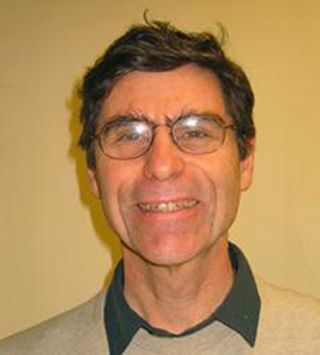James D. Phillips
- Research Professor of Physics
Education
B.S., University of Michigan
Ph.D., Stanford University
Research Interests
Precision measurements can be a window into new aspects of fundamental physics. For example, testing the equivalence principle, which states that two masses fall at the same rate independent of what they’re made of, can tell us about new gravity theories, alternatives to Einstein’s general relativity. These are needed because Einstein’s theory cannot be unified with the Standard Model, which explains the other forces, the strong nuclear, electromagnetic, and weak nuclear forces.
For precision measurements of gravity, I invented the world’s most precise laser distance gauge. It can measure changes in the distance between points separated by about a meter to an accuracy of 0.04 picometer, which is the diameter of a uranium nucleus!
This laser distance gauge can also help NASA to build the exceedingly precise optical systems that will be required to observe the light from an Earth-like planet orbiting a Sun-like star. If the Sun-like star is not the Sun, this is an extremely difficult challenge requiring a telescope in space 10 meters in diameter! The main mirror must be launched in segments, and the laser distance gauge will help to keep all the segments in the right places.
Publications
The following is a list of representative publications.
- "Studying Antimatter Gravity with Muonium,” A. Antognini et al., submitted to Atoms (2018), available at arXiv:1802.01438 [physics.ins-det].
- “Improved performance of semiconductor laser tracking frequency gauge,” D. M. Kaplan, J. D. Phillips, T. J. Roberts, and R. D. Reasenberg, to appear in JINST (2018), available at arxiv.org/abs/1712.03526.
- “Progress Towards a Muonium Gravity Experiment,” D. M. Kaplan, K. Kirch, D. Mancini, J. D. Phillips, T. J. Phillips, R. D. Reasenberg, T. J. Roberts, and J. Terry, Proc. Seventh Meeting on CPT and Lorentz Symmetry, Bloomington, Indiana, June 20–24, 2016, arXiv:1607.07434 [physics.ins- det].
- “Antimatter Gravity with Muonium,” D. M. Kaplan, E. Fischbach, K. Kirch, D. Mancini, J. D. Phillips, T. J. Phillips, R. D. Reasenberg, T. J. Roberts, and J. Terry, prepared for Proc. Third Workshop on Antimatter Gravity (WAG2015), London, England, 4–7 August 2015, arXiv:1601.07222 [physics.ins-det].
- “Subpicometer length measurement using semiconductor laser tracking frequency gauge,” R. Thapa, J.D. Phillips, E. Rocco, and R.D Reasenberg, Optics Letters36(19), 3759-3761, 2011.
- "Tracking Frequency Laser Distance Gauge," J.D. Phillips and R.D. Reasenberg, Review of Scientific Instruments, 76, 064501 (2005).
- “Recent Results in the Search for Fractional Charge at Stanford,” J.D. Phillips, W.M. Fairbank, and J. Navarro in Proc. Workshop on Non-Accelerator Particle Physics, Rochester, NY, 1-3 June 1987, Nucl. Instr. & Meth., A264, 125-130 (1988).
Expertise
Precision measurements, optical interferometry, experimental relativity, low-noise analog electronics.


